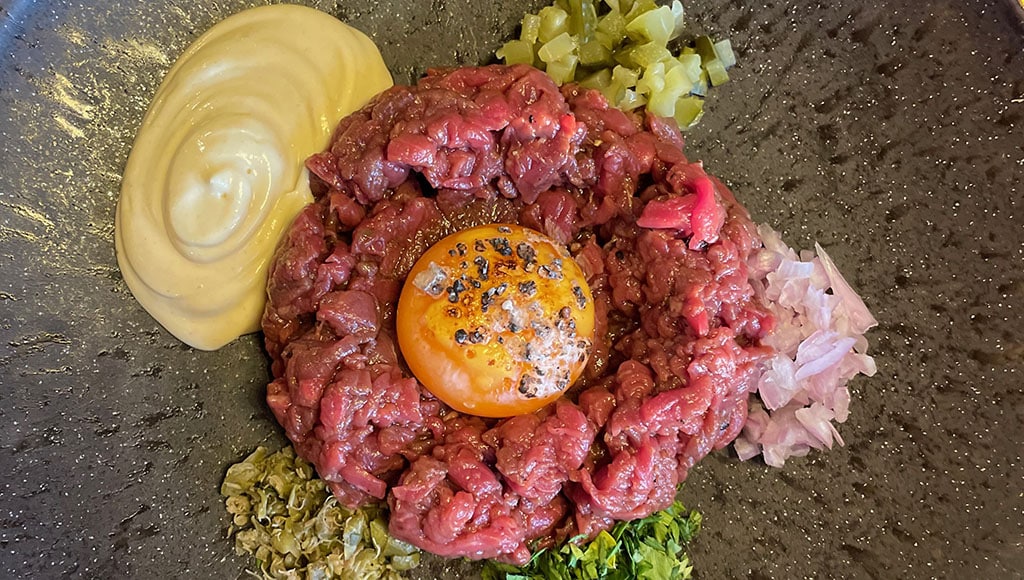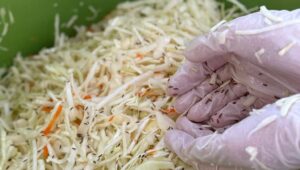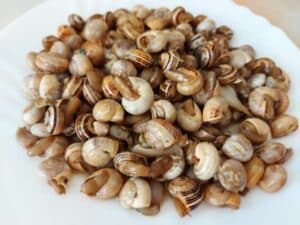One version of the story suggests that the steak tartare originated with the riding practices of nomadic tribes of Mongolia and Central Asia.
Genghis Khan and his Mongol horsemen would hide a piece of horse meat under the saddle and, after a day of conquests, would gain a putty that would be easy to munch.
Historically, these tribes have become known to Europeans as tartars, which led to the origins of the name as we know it, the steak tartare. (The riding custom is also said to be the inception of mincing meat in general, but let’s leave this fact for a different conversation.)
Another belief is that steak tartare evolved from the French Polynesian tradition of eating raw meat that came into the French cuisine as a result of its marriage with the tartare sauce, a faithful condiment to the dish with equally strong connections to the riding horsemen of Central Asia.
The story suggests that the condiment gained its name due to the inclusion of gherkins which were positively exotic, hence tartaric to the French at the time, and then lent its name to the meat dish it was served with.
The sauce is a mixture of yolks and olive oil (which make mayonnaise) with a variation of acidic ingredients such as vinegar, gherkins, Worcestershire sauce, lemon or Dijon mustard.
Some of these ingredients were not welcomed by the French fine dining establishment of the 19th century, so the only way to experiment with them was by attributing the recipe to some foreign origin.
This landed yet another title to the steak tartare, namely a “Beefsteak à l’Américaine”. Since then, steak tartare began to appear on bistro menus, but as it continued to build up its fan base throughout the 20th century, it lost its somewhat inaccurate American associations.
A good steak tartare is not an easy feat. Since it is served raw, all ingredients must be on top of their game in terms of flavour and quality. The French steak tartare is usually made with filet mignon or top-round steak, both lean yet flavourful cuts of meat, that are traditionally cut by hand.
It is often served as a stocky tower crowned with a yolk and surrounded by the finely chopped shallots, capers, parsley, gherkins and the tartare dressing, or whatever is left of it considering that some ingredients are already on the plate. Everything is then mixed together by hand at the table and served with toasted bread.
In Italy, the steak tartare is known under the name of carne cruda all’albese, meaning “raw meat, Alba-style”. Here, its flavour is elevated with the use of Parmigiano-Reggiano cheese and precious white truffles that grow in plenty in Alba, a town in the Piedmont region, hence the name. It is seasoned with extra virgin olive oil and a squeeze of lemon juice and topped with arugula, watercress, or other delicate greens.
With time, plenty of chefs have introduced some fascinating tastes and textures into their variations of the dish. For instance, some recipes suggest pairing steak tartare with smoked cheddar, and garnishing it with toasted buckwheat groats, horseradish and basil nuts. Others include jalapeños, soy sauce, tabasco and dashi topped with sesame seeds and a quail egg.
It is also common now to find salmon, tuna or even vegetable tartare on the menu as a homage to the technique of finely chopping ingredients with a sharp knife. And even if eating raw meat might be divisive, its popularity on the global culinary scene is proof of the acceptance and adoration of the steak tartare by the cognoscenti!
By Dr. Irina Mikhailava
|| features@algarveresident.com
Dr. Irina Mikhailava, a chef and a good food champion, happily residing in the Algarve and eating all over the world with an appetite for learning, sharing and writing. Instagram: incompanyoffood


























